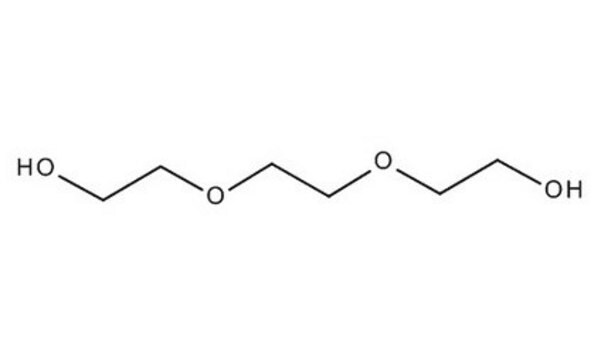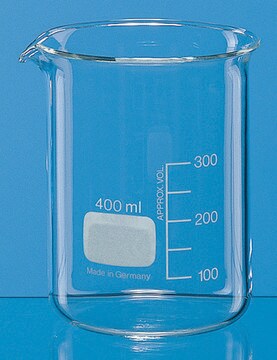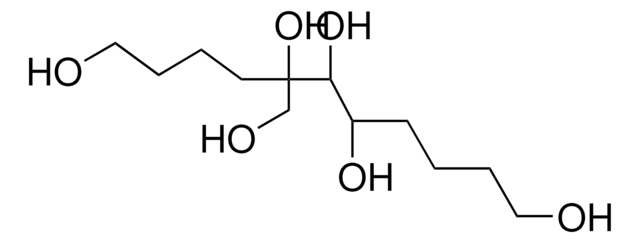T59455
Triethylenglycol
ReagentPlus®, 99%
Synonym(e):
Triglykol
About This Item
Empfohlene Produkte
Dampfdichte
5.2 (vs air)
Qualitätsniveau
Dampfdruck
<0.01 mmHg ( 20 °C)
Produktlinie
ReagentPlus®
Assay
99%
Form
viscous liquid
Selbstzündungstemp.
699 °F
Expl.-Gr.
9.2 %
Brechungsindex
n20/D 1.455 (lit.)
pH-Wert
6.5-7.5 (20 °C, 100 g/L)
bp
125-127 °C/0.1 mmHg (lit.)
mp (Schmelzpunkt)
−7 °C (lit.)
Dichte
1.124 g/mL at 20 °C (lit.)
SMILES String
OCCOCCOCCO
InChI
1S/C6H14O4/c7-1-3-9-5-6-10-4-2-8/h7-8H,1-6H2
InChIKey
ZIBGPFATKBEMQZ-UHFFFAOYSA-N
Suchen Sie nach ähnlichen Produkten? Aufrufen Leitfaden zum Produktvergleich
Verwandte Kategorien
Anwendung
- To prepare fatty acid gelators, which are used to gelate various edible and vegetable oils.
- As a solvent to prepare superparamagnetic iron oxide nanoparticles for in situ protein purification.
- As an absorbent agent in the subsea natural gas dehydration process.
Rechtliche Hinweise
Lagerklassenschlüssel
10 - Combustible liquids
WGK
WGK 1
Flammpunkt (°F)
330.8 °F - closed cup
Flammpunkt (°C)
166 °C - closed cup
Persönliche Schutzausrüstung
Eyeshields, Gloves, type ABEK (EN14387) respirator filter
Hier finden Sie alle aktuellen Versionen:
Besitzen Sie dieses Produkt bereits?
In der Dokumentenbibliothek finden Sie die Dokumentation zu den Produkten, die Sie kürzlich erworben haben.
Kunden haben sich ebenfalls angesehen
Protokolle
99%; Glycerol, ≥99.5%; Tetraethylene glycol, 99%
Unser Team von Wissenschaftlern verfügt über Erfahrung in allen Forschungsbereichen einschließlich Life Science, Materialwissenschaften, chemischer Synthese, Chromatographie, Analytik und vielen mehr..
Setzen Sie sich mit dem technischen Dienst in Verbindung.









